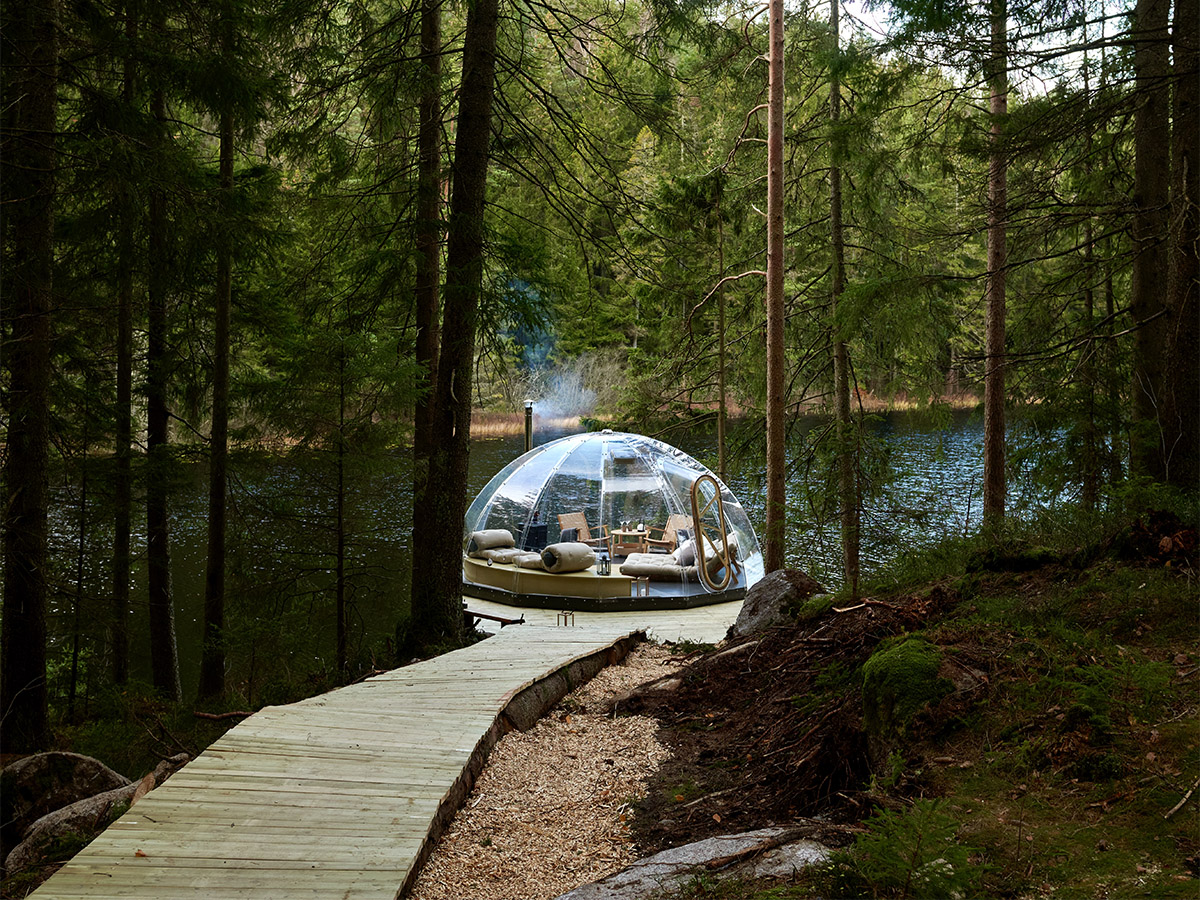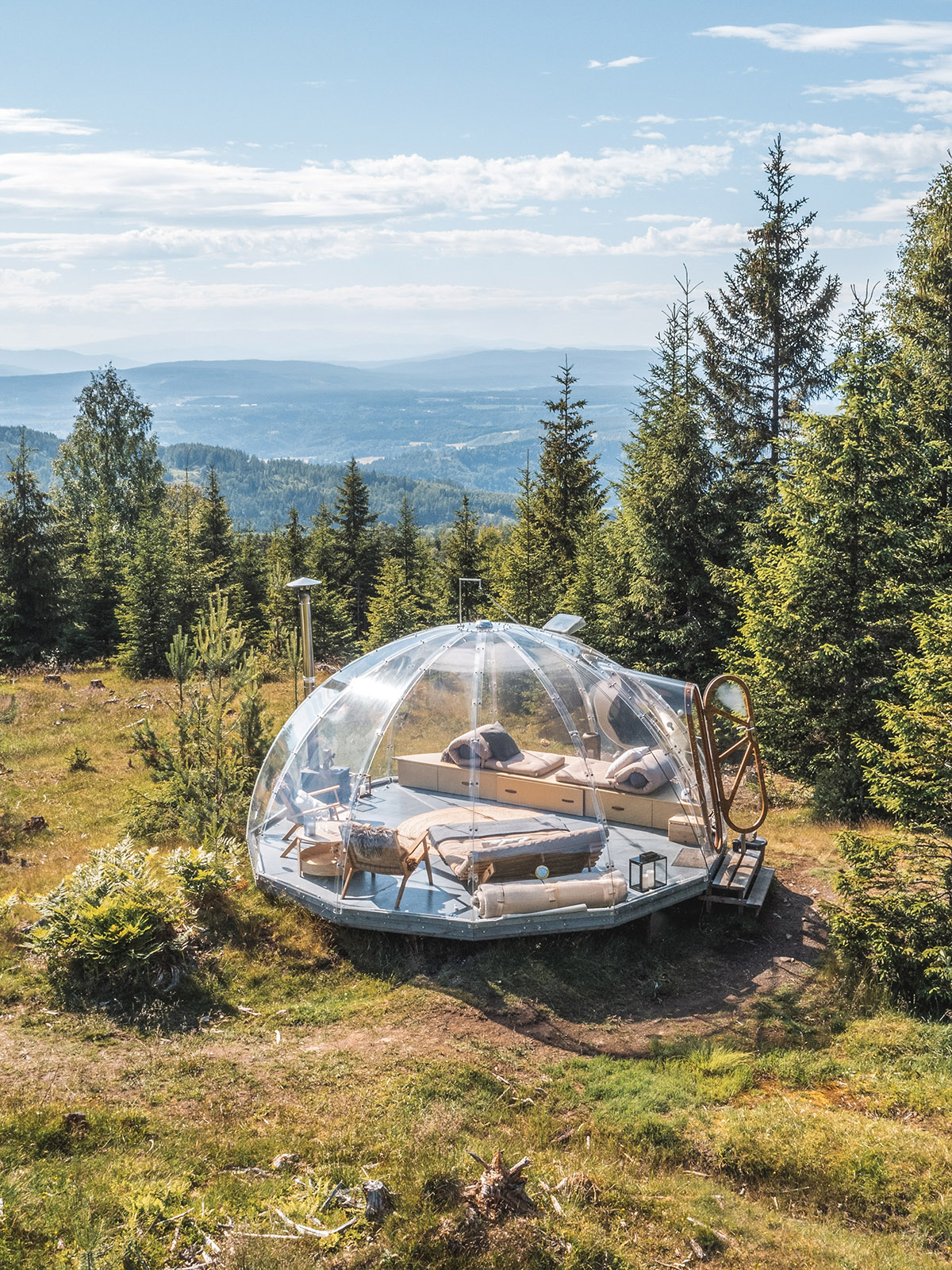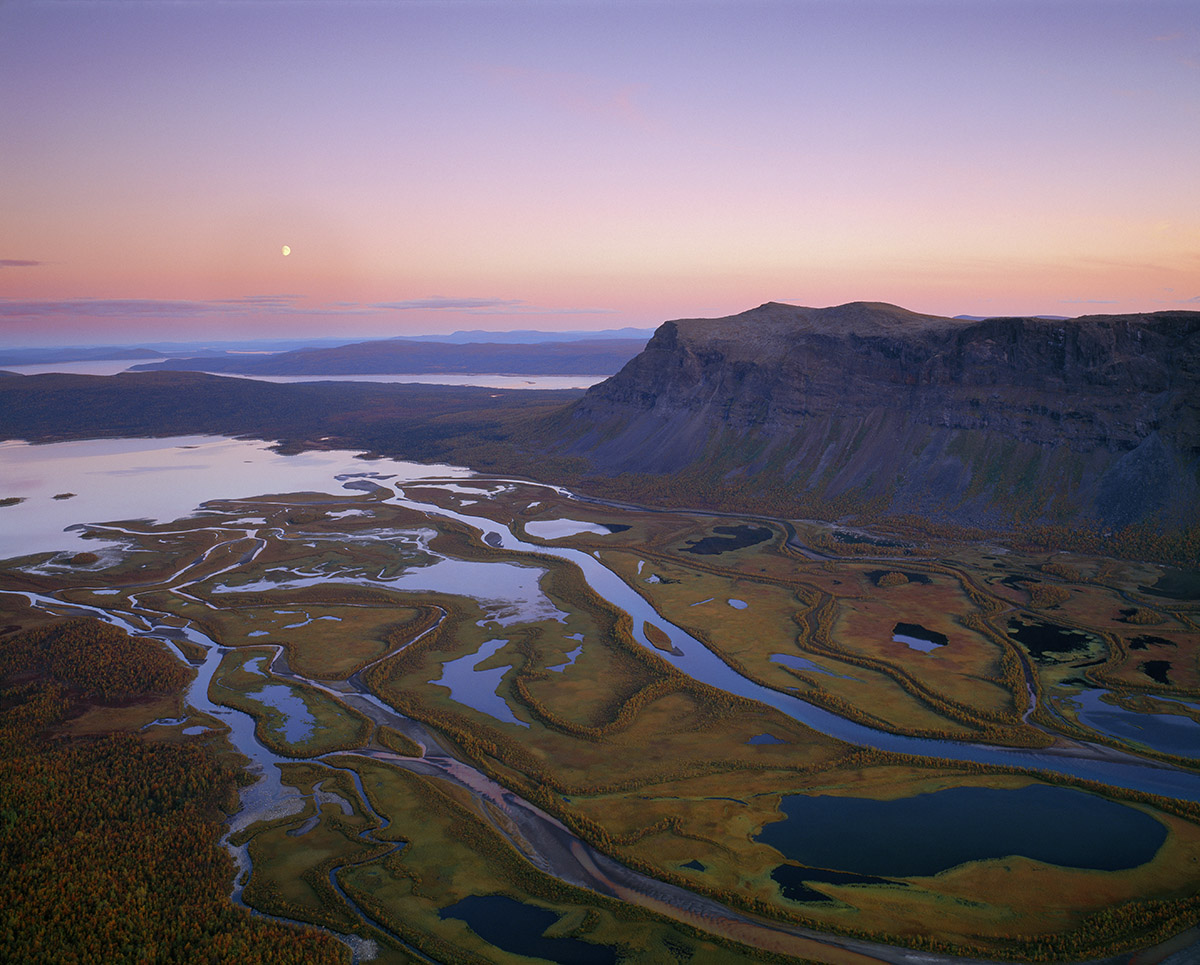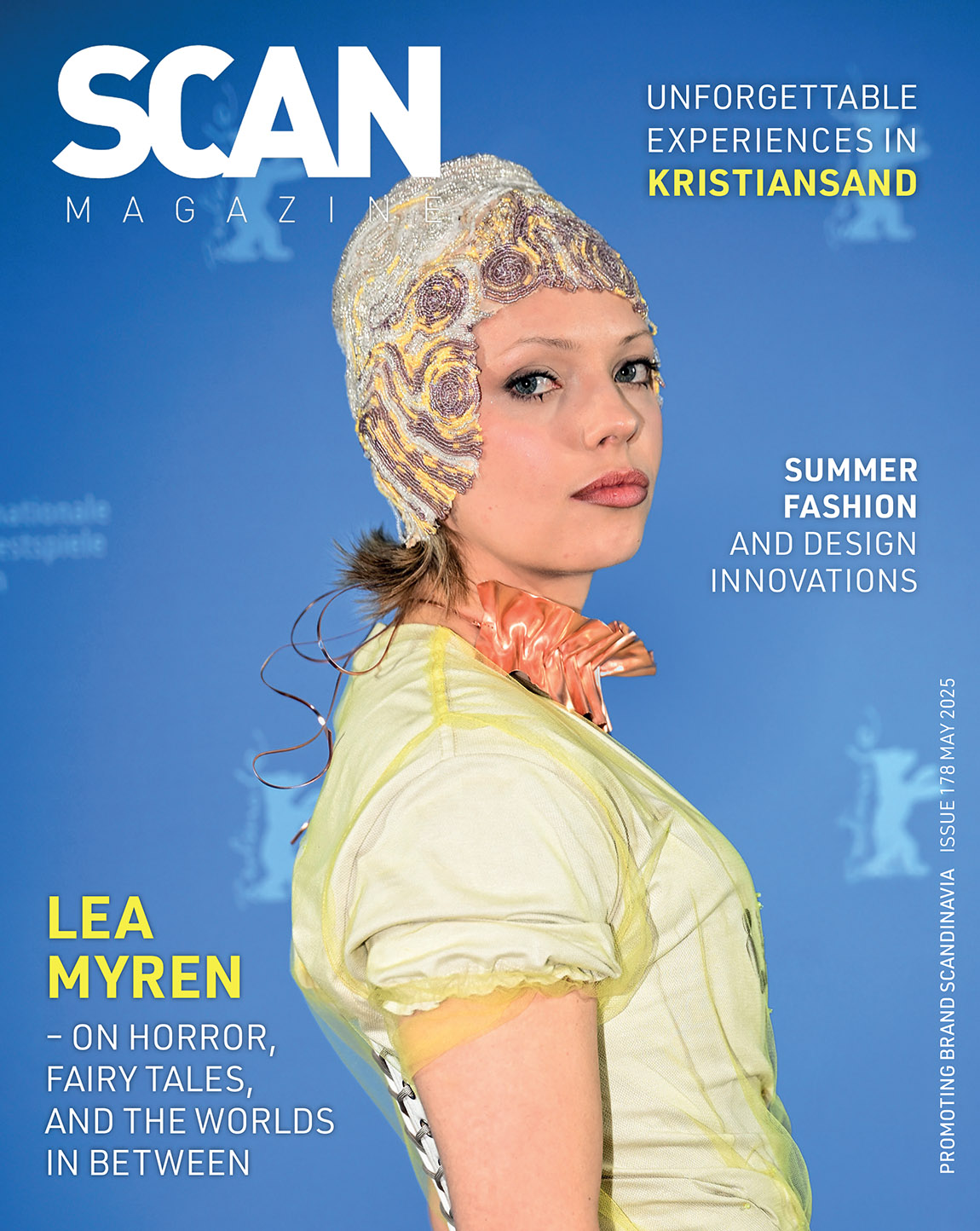Foraging in Finland
By Colin Nicholson
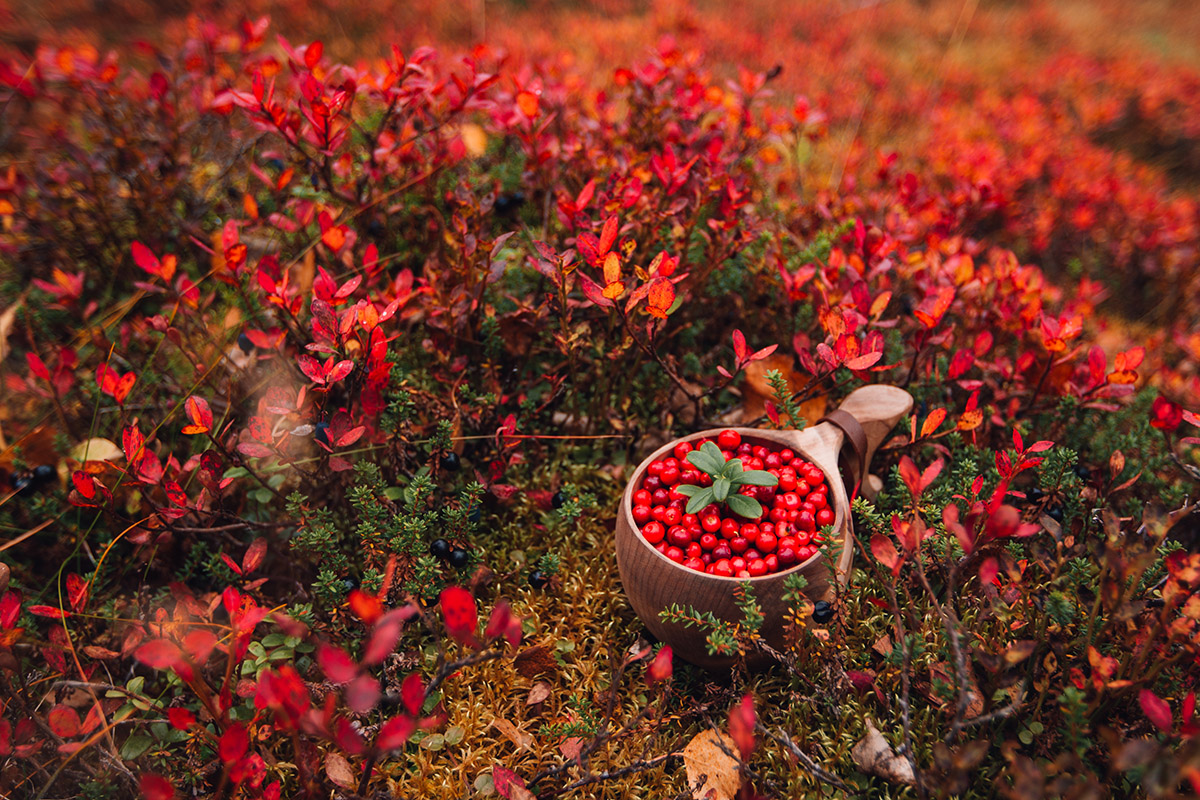
Photo: Julia Kivelä - Visit Finland
The Finns have, for the seventh year running, been ranked top in the world happiness report. Some ascribe this to their sense of community and relatedness, others to their connection with nature. With chef Sami Tallberg, we get a sense of the latter. Like a deer, he springs across the roadside ditch as soon as he spies something edible.
We are on an island near Turku, in south-west Finland, and are covered by the country’s freedom to roam, which allow us not just to roam, but to forage on privately owned land too. And the late summer bounty is abundant – if you know where to look.
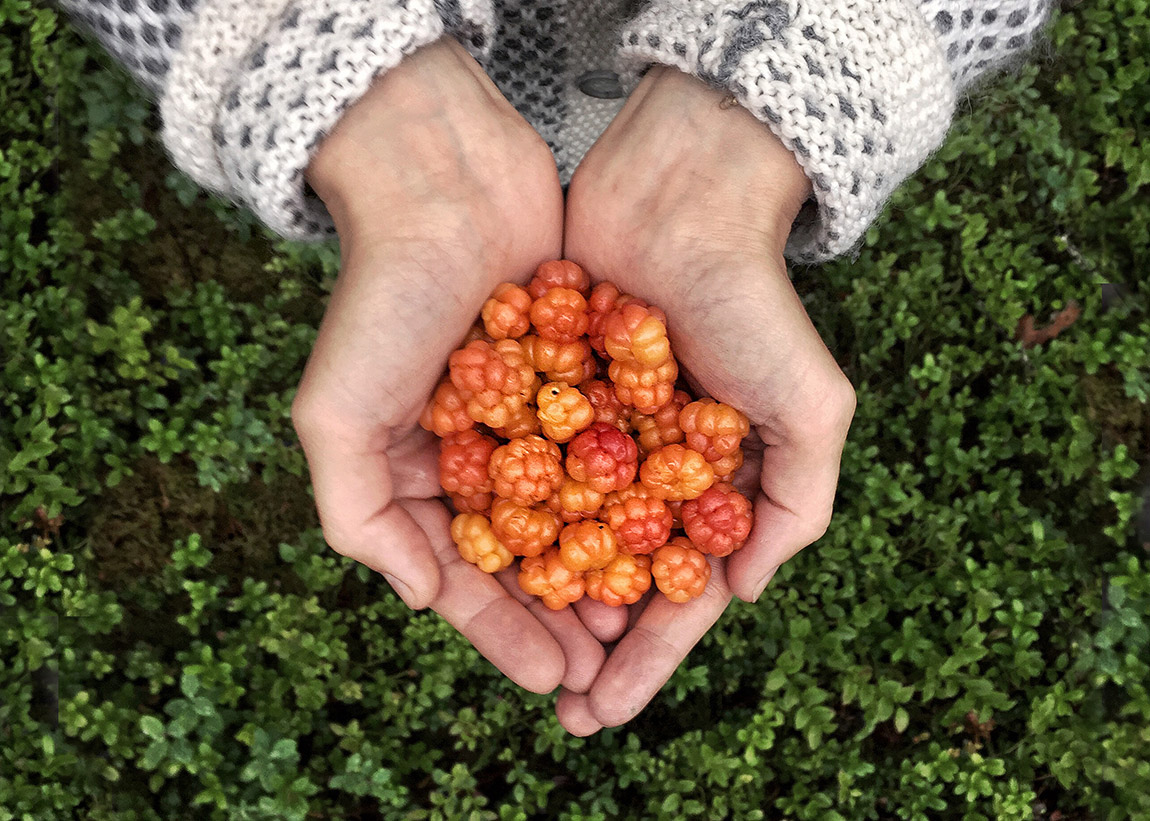
Photo: Virpi Mikkonen – Visit Finland
Once you recognise bilberry leaves, you soon find the forest floor is hiding an abundance of delicious blueberries under its canopy. Lingonberries are easy to spot, moving from white to pink to red as they ripen. But rarer are juniper berries, which take three years to ripen, wild cranberries and wild strawberries, whose aroma, tantalisingly, you smell long before you find them. Sami even finds us a real treat, wild raspberries.
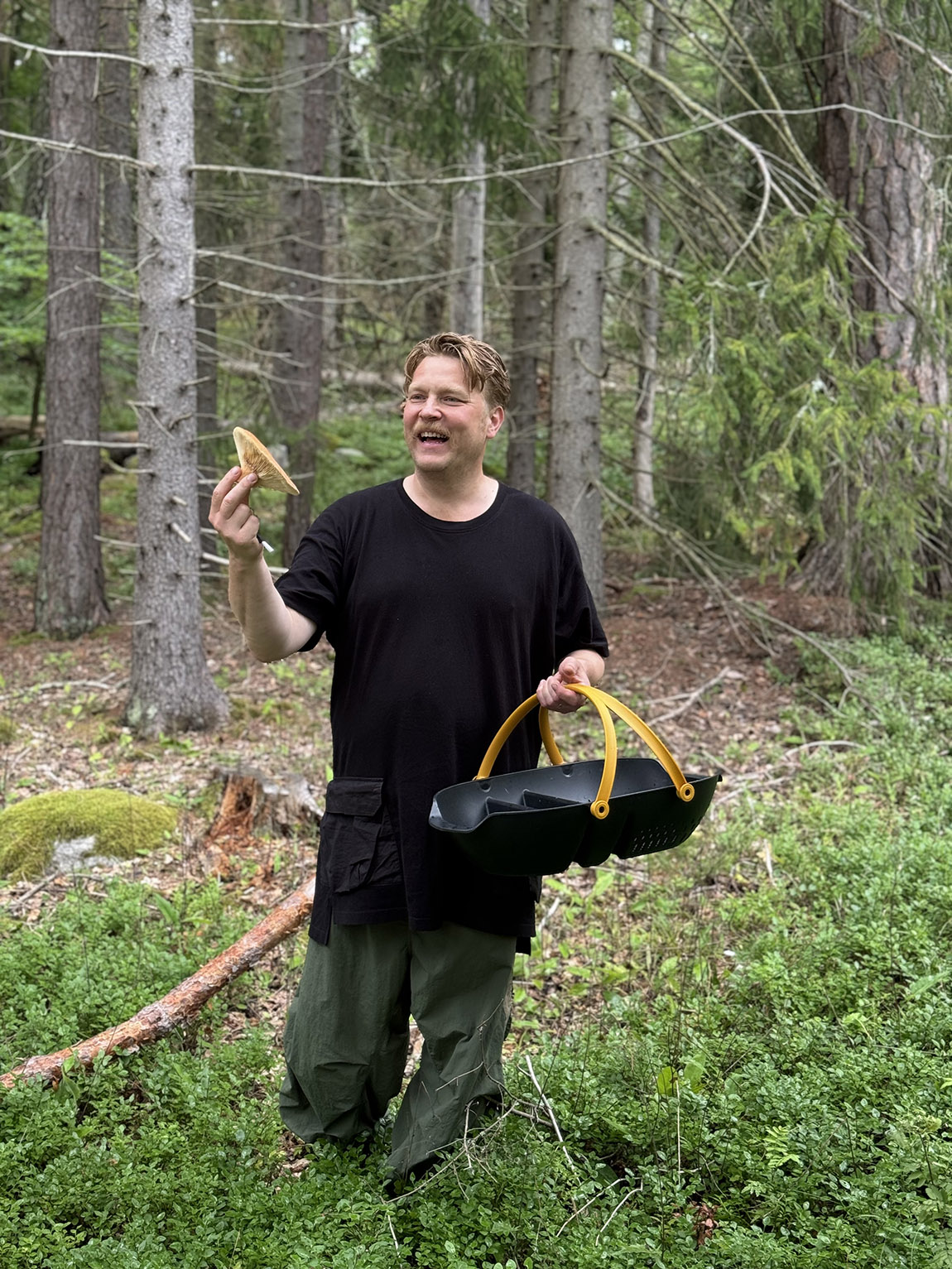
Chef Sami Tallberg. Photo: Virpi Mikkonen – Visit Finland
Dessert is sorted. But with regards to mushrooms, Sami, a genial, sandy-haired, moustachioed man, gently reveals that we have a lot to learn. Fungi are his favourite, especially for vegan cooking, because of their complex taste. He asks us to sniff one – it’s like almond croissants and marzipan. But it’s actually called a fishy milkcap as when cooking, fish flavours come out. Other mushrooms could pass for beef.
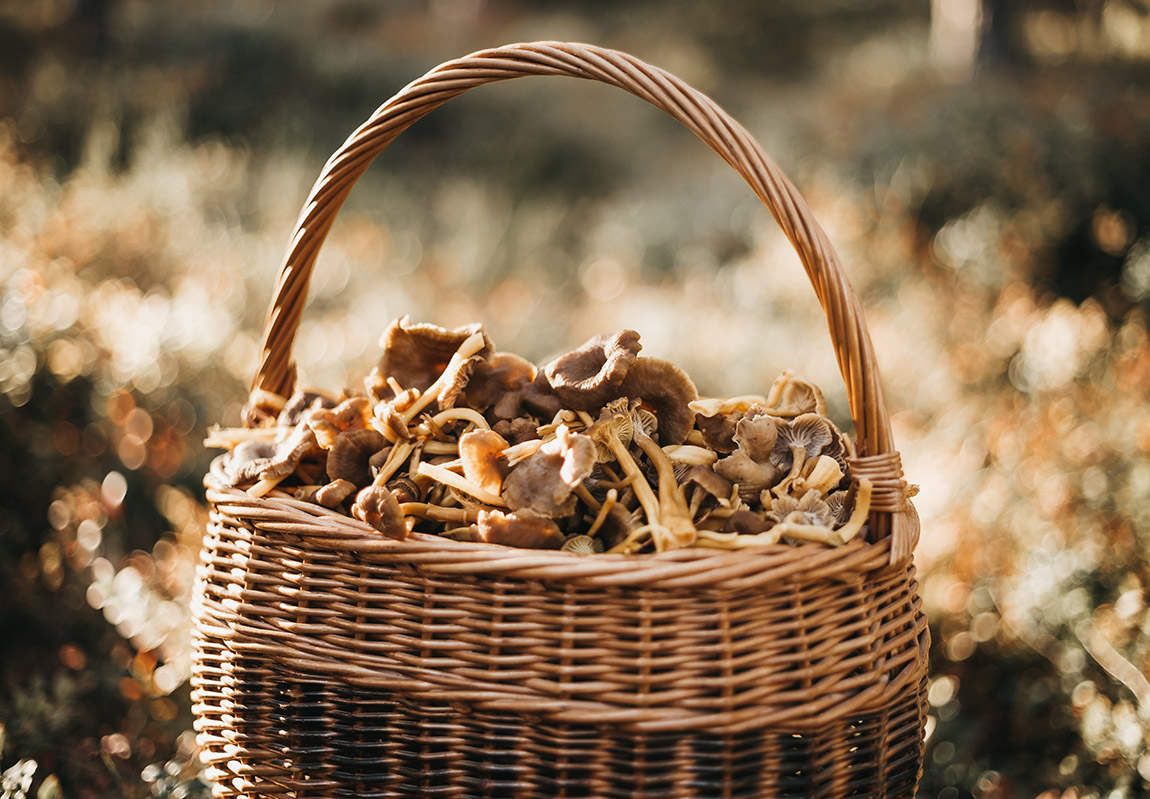
Photo: Emilia Hoisko – Visit Finland
A resurgence in interest
Sales of outdoor gear reveal a resurgence in Finns wanting to rediscover nature after the Covid lockdowns, with all the health benefits that brings – as long as you know what is edible. So teaching identification skills that have historically been passed down through generations is what Sami aims to do with his books, as well as mushroom safaris like this one.
A summer storm is brewing on this warm August day and, with the first drops of rain, we head to Sami’s kitchen, where a pile of flowers and leaves sits, looking like a child has gone flower-picking in a meadow. These are Sami’s salad leaves, which he collected earlier from the garden, though many can be found wild – the purple flowers of harebells, dandelion, sheep’s sorrel, wall lettuce, which tastes like rocket, orpine, clover-like wood sorrel and St John’s Wort. The result, when he mixes them into a deer tartar, is astonishing. Every forkful tastes different, a dizzying explosion of fresh piquant and peppery flavours in our mouths and we are on a natural high.
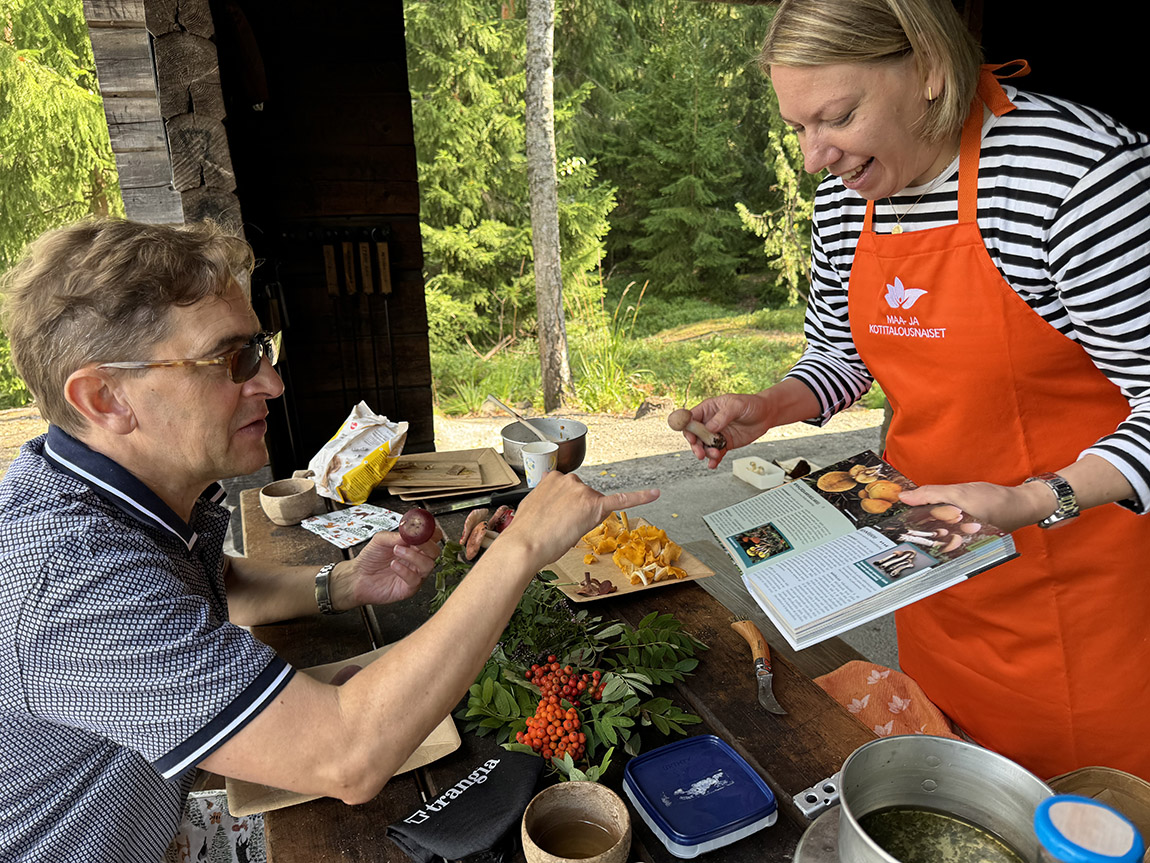
Guidance from Anna Kari at Finland’s Rural Women’s Advisory Organisation. Photo: Colin Nicholson – Visit Finland
For the main course, Sami prepares sea pike-perch, with pike roe sauce and new potatoes. But the standout ingredients are the mushrooms we picked earlier – the girolles, hedgehog mushrooms and fishy milkcaps – their complex flavours fighting each other for our attention, as well as pickled black trumpets. Some are so rich as to taste like a standalone dish of escargots – meaty without being gooey.
We are feeling delightfully heady, but there’s one more treat to come – those wild berries served in a herby meringue ring, their smells and tastes so redolent of the sunny forest floor, even as the thunder rattles the windows overlooking the sea.
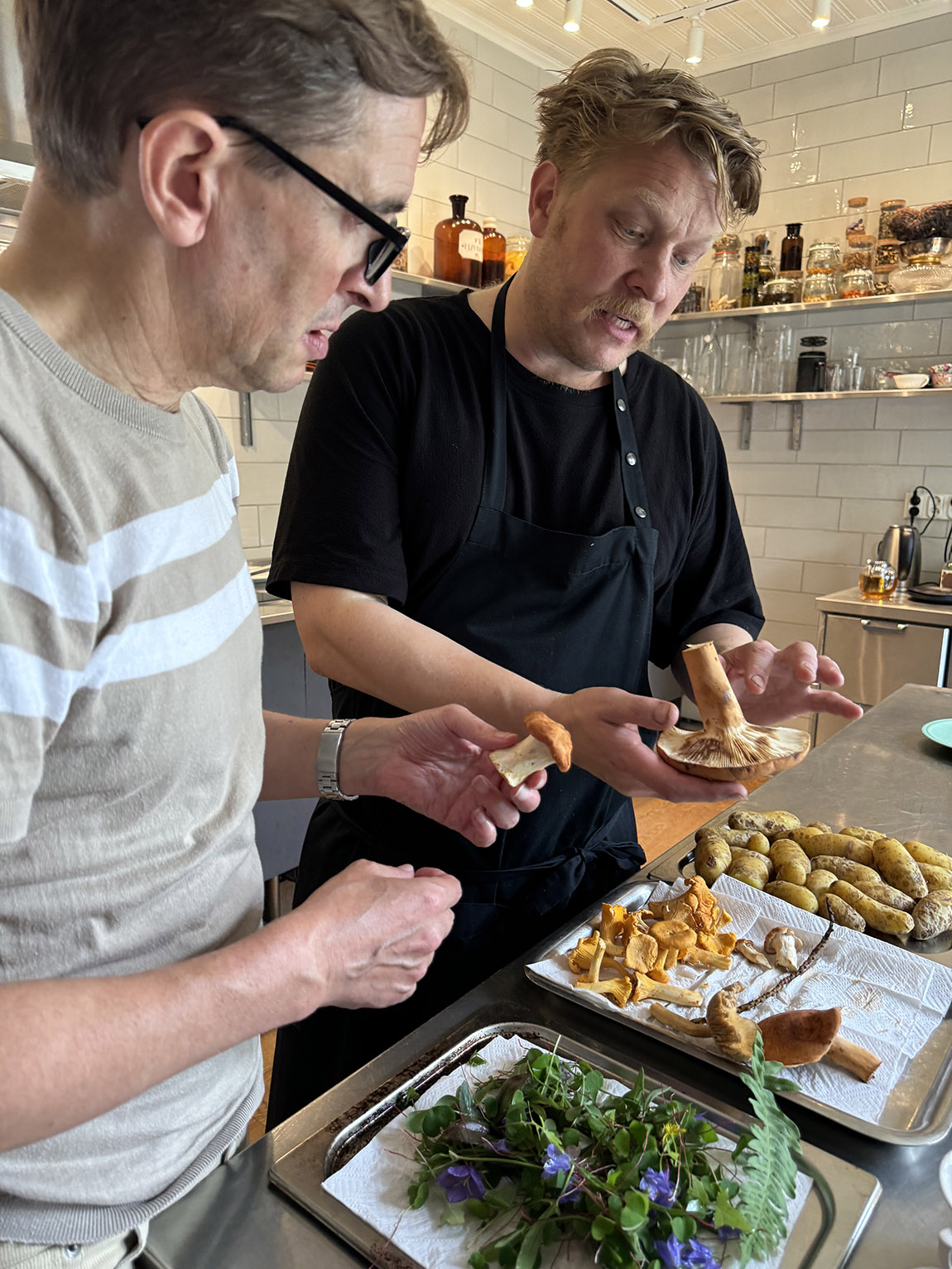
Sami Tallberg runs foraging and cooking courses. Photo: Colin Nicholson – Visit Finland
The right to roam
We are in the family villa of Sami’s partner, Lotta Petronella, a filmmaker who has researched the origins of Finland’s freedom to roam. She tells us how Ilma Lindgren, a 31-year-old widow, was outraged in 1914 when two landowners demanded a share of the lingonberries she had picked – a vital source of nutrients for her children. So she fought a six-year case that helped establish the rights.
Today, Finland is actively encouraging foraging again. In Turku’s town square, opposite our hotel, there is a food market six days a week where you can rent a small stall for €8 a day and pay no tax – as long as you only sell produce you have picked yourself from the local area.
So, the next day, we are wondering around Finland’s former capital, munching on fresh, locally picked berries. With its medieval cathedral and castle, and old Luostarinmäki quarter now preserved as an open-air museum, there’s lots to see, not to mention a host of galleries and other attractions.
For a locally sourced lunch, especially if it’s cold or wet, Turku’s market hall is wonderfully atmospheric. Its 151 beautiful wooden booths date from 1896 and offer all sorts of regional produce. There’s a dining area in the middle and many have their own lunch counters.
To keep interest in its culinary tradition, Turku must also make it accessible to its youthful population. As we travel by boat down Turku’s Aura river, we pass party ships full of the city’s 40,000 students, who make up a fifth of the population during term time. The city’s restaurants offer good value for money – right up to the classiest venues. At the waterfront restaurant Nooa, a four-course-plus tasting menu costs €69 or €123 with five glasses of wine and champagne.
Also good value are dinner cruises of the Finnish archipelago, by some counts the biggest in the world, with more than 40,000 islands (though that is counting nearly every rock). On the steamship Ukkopekka, we enjoy a delicious rose-tinted journey through islands of pink granite, with their pine trunks lit red in the sunset.
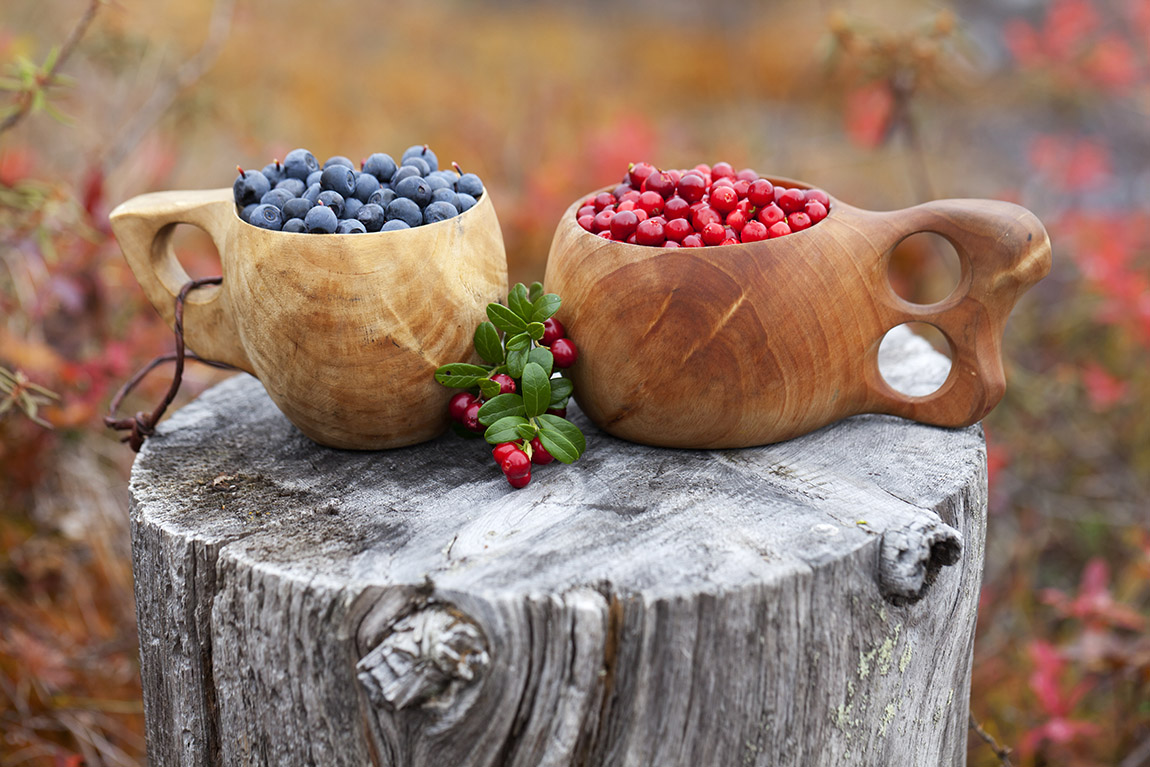
Photo: Emilia Hoisko – Visit Finland
Grounding our skills
A visit to Naantali, gateway to Moomin World, follows the next day. The serene riviera-like town has both a large spa hotel suitable for families and the boutique Tammiston Kuulas restaurant-hotel, which recently won recognition for its sustainability. But we are conscious that our assignment to learn how Finland is encouraging foraging has so far involved a lot of consumption and little production. While Sami’s introduction, as befits a former Ivy chef, was exceptional, we need to ground our skills.
That is the mission of Finland’s Rural Women’s Advisory Organisation, and Anna Kari is on hand to help. We meet her in the Kurjenrahka national park, not far north of Turku. For the mushrooms, she suggests focusing on three – russula, ceps and chanterelles – as they are easy to recognise and tend to reappear in the same place each summer. Ceps are beef-like in texture and taste, while chanterelles are light and delicious in a broth in spring onion, which she cooks on the spot. While a chef like Sami revels in fresh flavours, Anna focuses more on preserving berries and the flavour they develop during Finland’s long summer days.
In the park, we cross a marsh on wooden planks to find cloudberries, bog bilberries, as well as frogs and lizards! In the forest, we pick rowan berries to make almond-like lemonade, although you can turn them into Finnish amaretto too. The dandelions we pick will make a jam that tastes like honey. Anna also collects spruce tips to make a syrup or powder that you can put on ice cream, porridge or yoghurt throughout the year. Even inedible herbs can be used in bath salts.
Perhaps that’s the attraction of foraging, not just keeping the skills of past generations alive, but also keeping the memory of those halcyon summer days as the nights draw in.
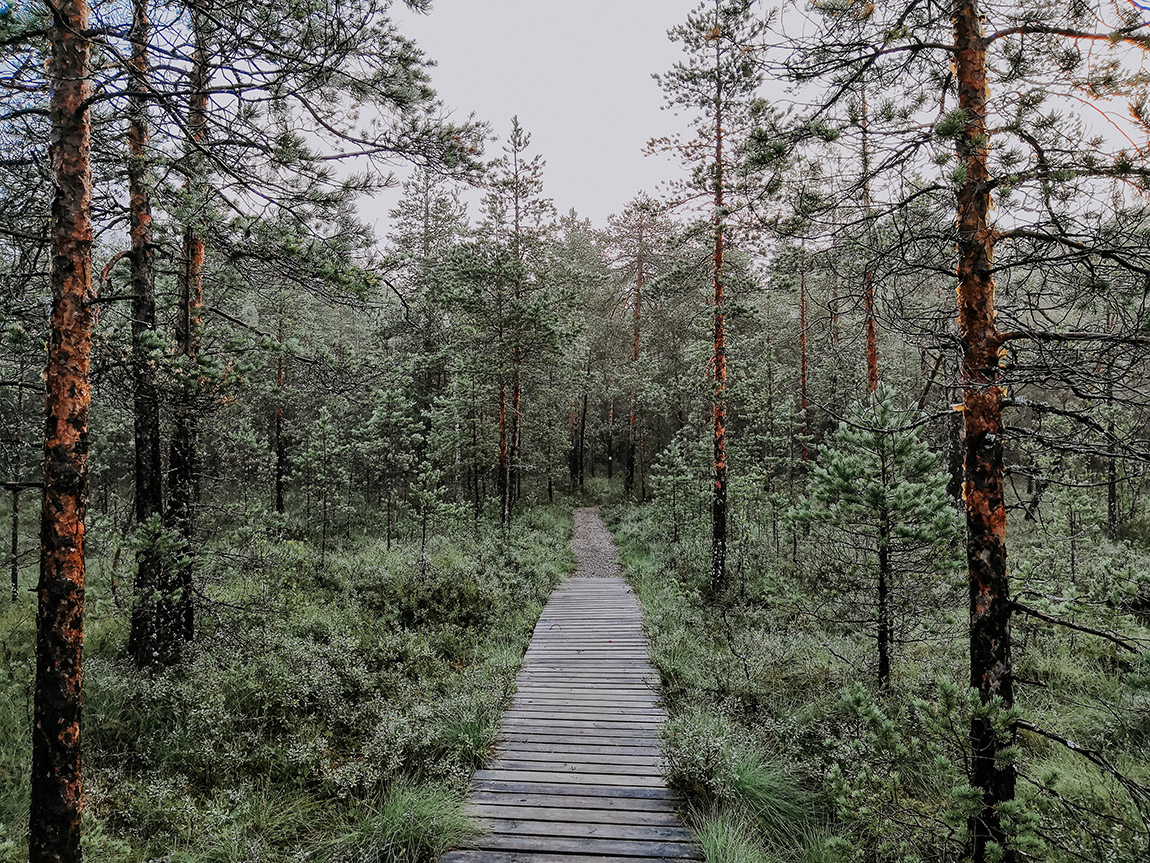
Photo: Julia Kivelä- Visit Finland
Colin travelled as a guest of Visit Finland (visitfinland.com) and Visit Turku (visitturku.fi). He stayed at Scandic Hamburger Bors Hotel (scandichotels.com).
For information on Sami Tallberg’s foraging and cooking courses, see www.samitallberg.com
Subscribe to Our Newsletter
Receive our monthly newsletter by email

